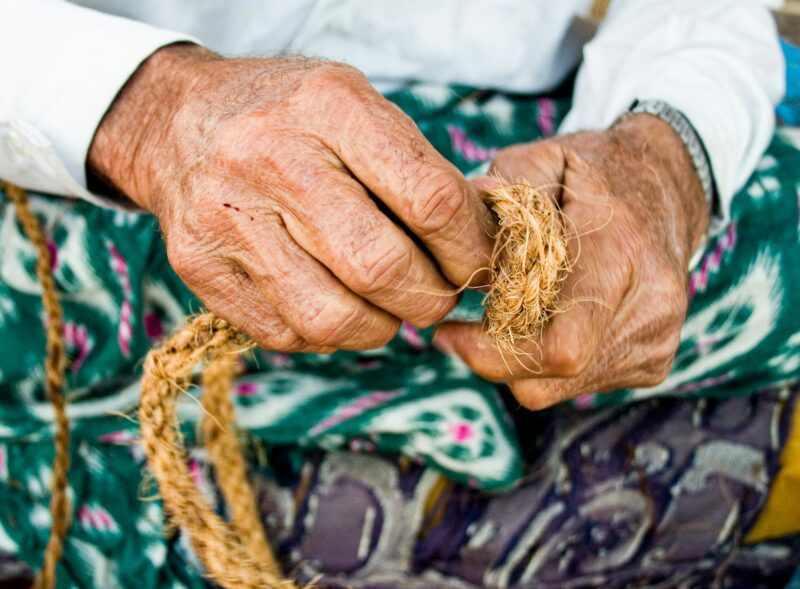
Did you know that over 54 million adults in the U.S. are affected by arthritis? This condition can limit mobility and cause pain. Knowing how to prevent arthritis is crucial for maintaining a healthy lifestyle. Simple lifestyle changes can make a big difference.
Eating a balanced diet, staying active, and managing weight are key factors. Regular exercise strengthens joints and reduces stiffness. Incorporating anti-inflammatory foods can also help keep your body in check. Staying hydrated is essential too. By focusing on these habits, you can significantly lower your risk of developing arthritis.
Understand Arthritis Basics
Definition
Arthritis refers to inflammation of the joints. This condition affects millions of people worldwide. It can lead to arthritis pain that limits mobility and daily activities. Joints become swollen, stiff, and painful. Over time, arthritis can damage joint tissues and impact overall health.
Different types of arthritis exist. Osteoarthritis is the most common type. It occurs due to wear and tear on the joints. Rheumatoid arthritis is another type. It is an autoimmune disease where the body attacks its own joints. Other types include gout and psoriatic arthritis. Each type has specific causes and effects.
Symptoms
Common symptoms of arthritis include pain, stiffness, and swelling in the joints. These symptoms can vary depending on the type of arthritis. In osteoarthritis, pain often worsens with activity and improves with rest. In rheumatoid arthritis, symptoms may include fatigue and morning stiffness lasting for hours.
People with arthritis may experience difficulty in performing everyday tasks. Simple actions like gripping a pen or walking can become challenging. This affects not just physical health but also emotional well-being.
Early Detection
Early detection plays a crucial role in arthritis management. Recognizing symptoms early can lead to better outcomes. Doctors often use a combination of physical exams and imaging tests to diagnose arthritis.
Treatment options vary based on the type and severity of arthritis. Medications can help manage pain and inflammation. Physical therapy strengthens muscles around affected joints. Lifestyle changes also contribute significantly to managing arthritis effectively.
Joining an arthritis community offers support and resources for those affected by this condition. Sharing experiences can provide emotional relief and practical advice. Community members often share tips about coping strategies and treatments that worked for them.
Recognize Different Arthritis Types
Osteoarthritis
Osteoarthritis is the most common type of arthritis. It occurs when cartilage breaks down over time. This condition usually affects weight-bearing joints like the knees and hips. Age is a major risk factor. Other factors include obesity and joint injuries. Symptoms may include pain, stiffness, and swelling in the affected areas.
Understanding osteoarthritis helps in prevention. Maintaining a healthy weight can reduce stress on joints. Regular exercise strengthens muscles around the joints. Using proper techniques during activities also minimizes injury risks.
Rheumatoid Arthritis
Rheumatoid arthritis is an autoimmune disorder. The immune system mistakenly attacks joint tissues. This condition often affects both sides of the body equally. Early signs include morning stiffness and fatigue. Swelling in the joints is common as well.
Risk factors for rheumatoid arthritis include genetics and smoking. Women are more likely to develop this condition than men. Recognizing rheumatoid arthritis signs early can lead to better treatment options. Treatments may involve medications that slow disease progression and relieve symptoms.
Gout
Gout is another type of arthritis caused by high uric acid levels in the blood. This condition leads to sudden, severe pain in joints, particularly in the big toe. Flare-ups happen after consuming certain foods or drinks high in purines, such as red meat and alcohol.
Risk factors include obesity, certain medications, and family history. Understanding these factors can help prevent gout attacks. Staying hydrated and maintaining a balanced diet are effective strategies.
Psoriatic Arthritis
Psoriatic arthritis occurs in some people with psoriasis, a skin condition. Joint pain accompanies skin rashes and inflammation. Symptoms vary widely among individuals.
This type of arthritis can cause damage if not treated early. Risk factors include having psoriasis, family history, and being between ages 30-50. Treatments focus on managing both skin and joint symptoms.
Reactive Arthritis
Reactive arthritis develops after an infection elsewhere in the body. Common triggers include sexually transmitted infections or gastrointestinal infections. Joint pain typically appears within weeks of the infection.
Risk factors include recent infections and being male under 40 years old. Recognizing this type helps manage symptoms effectively through appropriate treatments.
Infectious Arthritis
Infectious arthritis results from bacteria or viruses entering a joint. Septic arthritis is a severe form that requires immediate medical attention. Symptoms often include intense pain, swelling, and fever.
Understanding infectious arthritis is crucial for prompt treatment to prevent joint damage.
Recognizing different types of arthritis allows for tailored prevention strategies. Each type has unique causes and risk factors that influence management approaches.
Identify Risk Factors
Modifiable Factors
Obesity stands out as a significant risk factor for arthritis. Extra weight puts pressure on joints, especially the knees and hips. This added strain can lead to cartilage breakdown and pain.
Smoking is another modifiable risk factor. Studies show that smokers are more likely to develop rheumatoid arthritis. The harmful substances in cigarettes may trigger inflammation in the body.
A poor diet also plays a role. Diets high in processed foods and sugars can increase inflammation. On the other hand, a balanced diet rich in fruits, vegetables, and omega-3 fatty acids may help reduce this risk.
Genetic Risk
Genetics significantly influences susceptibility to arthritis. Family history can indicate whether someone is at higher risk. Certain genes are linked to specific types of arthritis, such as rheumatoid arthritis and osteoarthritis.
For example, individuals with a family member who has rheumatoid arthritis have an increased chance of developing it themselves. Understanding these genetic connections can help in early detection and management.
Related Conditions
Certain related conditions can increase the likelihood of developing arthritis. For instance, metabolic syndrome is linked to obesity and diabetes. These conditions raise inflammation levels in the body, which can trigger arthritis symptoms.
Other autoimmune diseases like lupus or psoriasis also elevate the risk of developing arthritis. Recognizing these related conditions is crucial for proactive health management.
Personal Circumstances
Personal circumstances play a critical role in identifying risk factors. Age is a non-modifiable risk factor; arthritis is more common in older adults. Gender also matters; women are generally at higher risk for certain types of arthritis compared to men.
Physical activity levels impact joint health too. Regular exercise strengthens muscles around joints, reducing strain. Conversely, inactivity can weaken these muscles, leading to increased risk.
Recognizing personal risk factors empowers individuals to take control of their health. It helps them make informed lifestyle choices that may lower their chances of developing arthritis.
Proactive Management
Acknowledging these risk factors is vital for prevention measures. Individuals should assess their lifestyle habits and family histories regularly. Making changes now can lead to better joint health later on.
Regular check-ups with healthcare providers can assist in monitoring potential risks. Early intervention can slow down or prevent the onset of arthritis.
Maintain a Healthy Weight
Monitor Weight
Regularly monitoring body weight is crucial. Excess weight adds strain on joints, especially in the knees and hips. This extra pressure can lead to pain and discomfort. Keeping track of your weight helps you stay aware of changes. A simple scale can do the job. Weigh yourself once a week at the same time for consistency.

Benefits of Weight Loss
Losing weight has significant benefits for joint health. Studies show that even a modest weight loss can reduce the risk of osteoarthritis. Losing just 10-15 pounds can lower stress on your joints by nearly 30%. This reduction can lead to less pain and improved mobility. A healthier weight also promotes overall well-being. It can enhance your energy levels and boost your mood.
Practical Tips
Achieving and maintaining a healthy weight requires effort and commitment. Here are some practical tips to help you:
Eat Balanced Meals: Focus on fruits, vegetables, lean proteins, and whole grains.
Stay Active: Aim for at least 150 minutes of moderate exercise each week.
Set Realistic Goals: Aim for a slow, steady weight loss of 1-2 pounds per week.
Stay Hydrated: Drink plenty of water throughout the day.
Avoid Processed Foods: Limit sugary snacks and high-calorie beverages.
These steps can help you maintain a healthy weight effectively.
Support Systems
Seek support from friends or family members. They can encourage you to stay on track with your weight management goals. Consider joining a group or class focused on fitness or nutrition. Sharing experiences with others can motivate you to keep going.
Professional Guidance
Consulting with a healthcare provider is beneficial. They can help create a personalized plan suited to your needs. Nutritionists or dietitians can provide tailored advice on meal planning and portion control. Regular check-ins with professionals ensure you stay focused on your goals.
Stay Physically Active
Low-Impact Exercises
Incorporating low-impact exercises into daily routines can significantly benefit joint health. These activities reduce stress on the joints while still providing essential movement. Walking, swimming, and cycling are excellent options. They help maintain mobility without causing pain or discomfort.
Regular participation in low-impact exercises can also enhance cardiovascular fitness. Improved heart health supports overall well-being. This is crucial for individuals at risk of arthritis. Moreover, these activities promote weight management, which is vital after discussing maintaining a healthy weight.
Strength Training
Strength training plays a key role in preventing arthritis. It helps build muscle around the joints. Stronger muscles provide better support and stability. This can lead to reduced joint pain and improved function.
Engaging in strength training two to three times per week is recommended. Focus on major muscle groups such as legs, arms, and core. Simple exercises like squats, lunges, and push-ups can be effective. Resistance bands or light weights can also enhance strength without overexerting the joints.
Flexibility Exercises
Flexibility exercises are essential for joint health as well. Stretching improves the range of motion in the joints. This can prevent stiffness and discomfort associated with arthritis. Incorporate stretching into your routine at least three times a week.
Yoga and Pilates are excellent choices for improving flexibility. They also promote relaxation and reduce stress levels. Stress can worsen arthritis symptoms, so finding ways to manage it is beneficial.
Consistency is Key
Consistency in physical activity is crucial for long-term benefits. Aim for at least 150 minutes of moderate aerobic activity each week. Break this down into manageable sessions throughout the week.
Establishing a routine makes it easier to stay active. Set specific days and times for exercise. Consider joining a group or class to stay motivated. Social support can encourage adherence to physical activity goals.
Regularly engaging in these activities not only improves joint health but also boosts overall well-being. Enhanced mood, better sleep, and increased energy levels are just a few benefits of staying physically active.
Follow a Balanced Diet
Nutrient-Rich Foods
A balanced diet plays a crucial role in preventing arthritis. It should include plenty of fruits and vegetables. These foods are high in vitamins and antioxidants. They help fight inflammation, which is key for joint health. Whole grains like brown rice and quinoa provide fiber. Fiber helps reduce inflammation and maintain a healthy weight.
Lean proteins such as chicken, turkey, and fish are also important. Fish like salmon and mackerel contain omega-3 fatty acids. These fats can lower inflammation levels. Including nuts and seeds can add healthy fats to your diet too. They support overall joint function.
Hydration Matters
Staying hydrated is essential for everyone, especially those at risk for arthritis. Water helps lubricate joints and maintain their function. Aim for at least eight glasses of water daily. This keeps the joints well-hydrated.
Limit sugary drinks and excessive caffeine. These can lead to dehydration. Dehydration may worsen joint pain over time. Drinking herbal teas or infused water can be good alternatives.
Limit Processed Foods
Processed foods can be harmful to joint health. Many contain unhealthy fats, sugars, and additives. These ingredients can promote inflammation in the body. Reducing intake of processed snacks, fast food, and sugary treats helps prevent arthritis.
Instead, focus on whole foods. Fresh produce, whole grains, and lean proteins should make up most meals. Preparing meals at home allows better control over ingredients.
Anti-Inflammatory Foods
Certain foods are known for their anti-inflammatory properties. Incorporating these into your diet may help reduce arthritis symptoms:
Berries: Blueberries and strawberries are rich in antioxidants.
Leafy Greens: Spinach and kale contain vitamins that support joint health.
Olive Oil: Extra virgin olive oil has healthy fats that fight inflammation.
Turmeric: This spice contains curcumin, known for its anti-inflammatory effects.
Ginger: Ginger can also help reduce pain and swelling in joints.
Eating these foods regularly may improve joint function over time.
Individual Considerations
Diet needs vary by individual. Each person’s body responds differently to specific foods. Keeping a food diary can help identify what works best for you. Noticing changes in symptoms after eating certain foods is vital.
Consulting with a healthcare professional is wise before making major dietary changes. They can provide personalized advice based on your type of arthritis or risk factors.
Protect Your Joints
Proper Techniques
Using proper techniques during physical activities is crucial. This helps prevent injuries and protects your joints. For example, when lifting weights, bend your knees instead of your back. This technique reduces strain on your leg joints and lower back.
Warm-up exercises are also essential. They prepare your body for activity and increase joint flexibility. Stretching before exercise can help avoid sore joints afterward. Practicing good posture while sitting or standing supports joint health.
Protective Gear
Wearing appropriate protective gear is important during sports or high-risk activities. Equipment like knee pads, elbow guards, and ankle braces can reduce the risk of joint injuries. For instance, football players often wear helmets and shoulder pads to protect their upper body.
Even in casual activities, using proper footwear matters. Shoes with good arch support can prevent joint pain in the knees and legs. They help maintain alignment and reduce stress on affected joints.
Listening to Your Body
Listening to your body is vital for preventing arthritis pain relief. Taking breaks during physical activities allows your joints to recover. If you feel discomfort or fatigue, stop and rest. Ignoring these signals can lead to joint damage arthritis over time.
Overexertion can cause painful joints and long-term issues. It’s essential to pace yourself during workouts or sports. Gradually increasing intensity helps build joint strength without risking injury.
Regular Exercise
Regular exercise supports healthy joints. Low-impact activities like swimming or cycling are gentle on the joints while improving strength. These exercises promote joint health without causing excessive wear.
Strength training also benefits joint stability. Focus on exercises that strengthen the muscles around specific joints, such as the knees or hips. Stronger muscles provide better support and help prevent injuries.
Weight Management
Maintaining a healthy weight reduces stress on your joints. Excess weight increases the likelihood of joint pain and arthritis development. A balanced diet complements regular exercise for effective weight management.
Choosing nutritious foods enhances overall health while protecting your joints from wear and tear. Foods rich in omega-3 fatty acids, like fish, can help reduce inflammation. Incorporating fruits and vegetables into meals provides antioxidants that support joint health.
Prioritize Regular Check-Ups
Importance of Check-Ups
Routine medical check-ups play a vital role in true prevention of arthritis. Early detection can make a significant difference in managing joint health. Doctors can identify risk factors before they develop into serious issues. Regular visits allow for monitoring changes in joint function. This proactive approach helps catch problems early.
Healthcare providers can assess family history and lifestyle choices during these visits. They consider factors like age, weight, and activity level. These assessments help tailor preventive measures for each individual.
Open Communication
Open communication with healthcare providers is crucial. Patients should feel comfortable discussing any joint health concerns. Sharing symptoms, even minor ones, can lead to better outcomes. It’s important to talk about pain, stiffness, or swelling in joints.
Patients should ask questions and express worries about their joint health. This dialogue encourages personalized care plans. Providers can suggest specific preventive care coverage options based on needs.
Role of Screenings
Screenings are essential in managing risk factors effectively. Blood tests can reveal inflammation markers linked to arthritis. Imaging tests can show early signs of joint damage. These screenings help identify at-risk individuals before symptoms appear.
Regular screenings also monitor existing conditions that may affect joints. Conditions like diabetes and obesity increase arthritis risk. Addressing these factors early can prevent further complications.
Benefits of Preventive Measures
Preventive measures go hand-in-hand with regular check-ups. Simple lifestyle changes can have a big impact on joint health. Maintaining a healthy weight reduces stress on joints. Regular exercise strengthens muscles around the joints, providing better support.
Eating a balanced diet rich in omega-3 fatty acids is beneficial too. Foods like fish, nuts, and seeds help reduce inflammation. Staying hydrated also supports overall joint function.
Consistency Matters
Consistency is key when it comes to check-ups and screenings. Scheduling annual or biannual visits ensures ongoing assessment of joint health. Keeping track of any changes over time allows for timely interventions.
Staying informed about one’s health empowers patients to take charge of their well-being. Understanding personal risk factors helps in making educated decisions regarding lifestyle and treatment options.
Manage Stress Effectively
Mindfulness Techniques
Stress can worsen arthritis symptoms. Mindfulness practices help reduce stress levels. Techniques such as meditation and deep breathing are effective. They promote relaxation and calm the mind. Regularly practicing these techniques can lead to long-term benefits. Research shows that mindfulness reduces inflammation in the body. Less inflammation means less pain and discomfort.
Daily meditation for just 10 minutes can make a difference. Focus on your breath or a calming image. This simple act can ground you in the present moment. Over time, it creates a more relaxed state of mind. Mindfulness helps manage emotional responses to pain. It teaches you to observe thoughts without judgment.
Connection Between Stress and Inflammation
Stress triggers the body’s fight-or-flight response. This response releases hormones like cortisol. High levels of cortisol can increase inflammation. Chronic stress leads to ongoing inflammation, worsening arthritis symptoms.
Studies indicate a strong link between stress and physical health. For example, people with high-stress levels often report more joint pain. Managing stress effectively can lower these pain levels. Understanding this connection is vital for arthritis management.
Finding Joyful Activities
Engaging in hobbies can significantly reduce stress. Activities that bring joy create positive feelings. This shift in mood can improve overall health and well-being. Whether it’s painting, gardening, or playing an instrument, these activities provide an escape from daily worries.
Physical activities, like yoga or dancing, also help. They combine movement with enjoyment, enhancing mental health and flexibility. Finding what brings you happiness is essential.
Consider making a list of activities you enjoy:
Reading
Hiking
Cooking
Crafting
Playing sports
These activities not only distract from pain but also foster social connections. Socializing with friends and family boosts mood and reduces feelings of isolation.
Cierre de pensamientos
Preventing arthritis is within your reach. By understanding the basics and recognizing risk factors, you can take charge of your health. Maintaining a healthy weight, staying active, and eating a balanced diet are key steps. Protecting your joints and managing stress effectively also play crucial roles in keeping arthritis at bay. Regular check-ups ensure you’re on the right track.
Take action now. Implement these strategies into your daily routine. Your future self will thank you for it. Don’t wait—start making changes today to enhance your quality of life and potentially avoid arthritis complications down the road.
Frequently Asked Questions
How can I prevent arthritis naturally?
To prevent arthritis naturally, maintain a healthy weight, stay physically active, and follow a balanced diet rich in anti-inflammatory foods like fruits, vegetables, and omega-3 fatty acids.
What are the early signs of arthritis?
Early signs of arthritis include joint pain, stiffness, swelling, and decreased range of motion. Recognizing these symptoms early can lead to better management.
Can exercise help prevent arthritis?
Yes, regular physical activity strengthens muscles around joints, improves flexibility, and maintains joint function. Aim for low-impact exercises like swimming or cycling.
Is there a specific diet to prevent arthritis?
A balanced diet that includes whole grains, lean proteins, fruits, and vegetables can help reduce inflammation. Foods rich in omega-3 fatty acids are particularly beneficial.
How often should I get check-ups for arthritis prevention?
Regular check-ups with your healthcare provider are essential. Aim for at least once a year or more frequently if you have risk factors or family history.
Does stress affect arthritis?
Yes, stress can exacerbate inflammation and worsen arthritis symptoms. Managing stress through techniques like meditation or yoga is beneficial for overall joint health.
Are there supplements that can help prevent arthritis?
Certain supplements like glucosamine and omega-3 fatty acids may support joint health. Always consult your doctor before starting any new supplement regimen.




